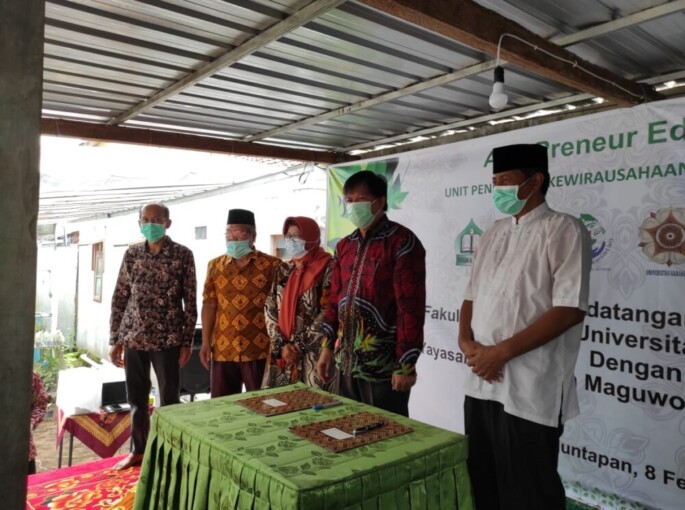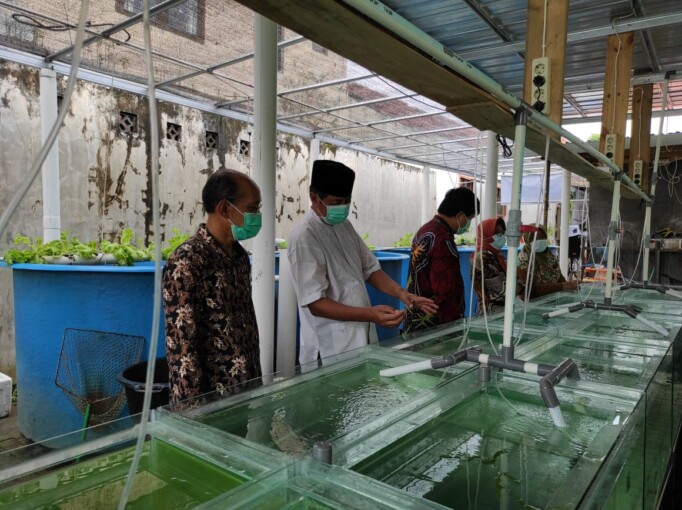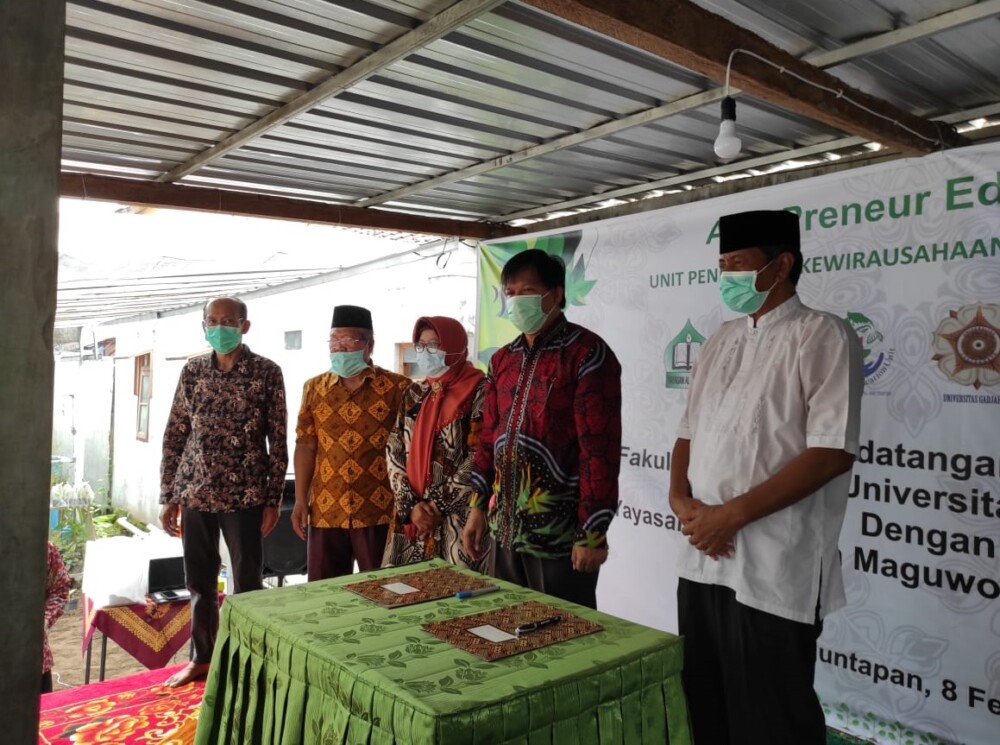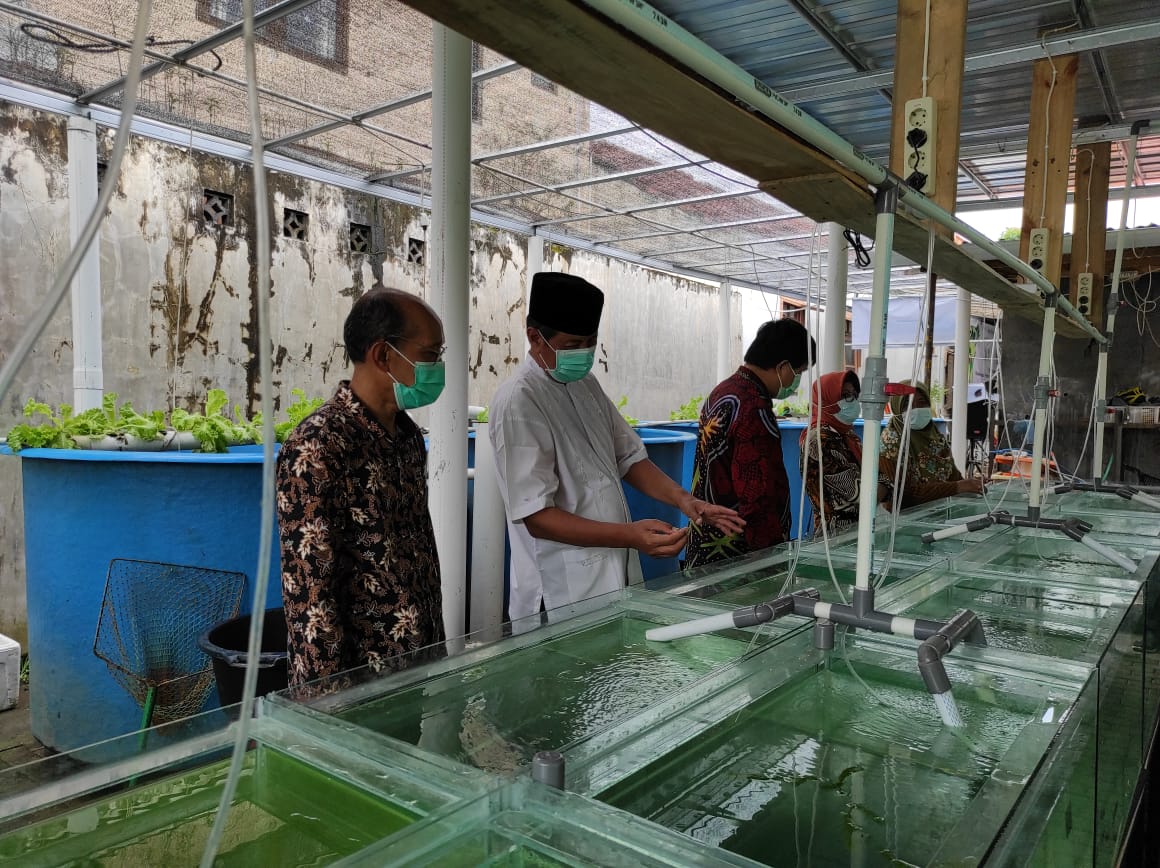The UGM Faculty of Agriculture has harvested tilapia and officially inaugurated the Ornamental Fish Maintenance Unit at the Al-Muthiin Orphanage, Banguntapan Bantul, on Monday (8/2). Dr. Jamhari, as the Dean of the Faculty of Agriculture, held the fish harvest and this inauguration along with the Al-Muthiin Orphanage managers.
Jamhari explained that his party commonly carried out this tilapia harvest activity. However, this time, the fish harvest collaborated with another activity, namely the Ornamental Fish Maintenance Unit’s Inauguration. This Ornamental Fish Maintenance Unit is the result of collaboration with the Ministry of Marine Affairs and Fisheries.
“In cooperation, one of the series activities from the 15th Lustrum of the UGM Faculty of Agriculture is fish cultivation with a central drain glass fiber tub with a vertical filter recirculation system. UGM Faculty of Agriculture has carried out this activity for four years,” he said.
Jamhari stated that this kind of activity is counted as a community service activity as well as a form to develop social-entrepreneurship in integrated agriculture in a wider sense, including agriculture, fisheries, and animal husbandry. He explained that he cultivated nine tubs with a diameter of 1.5, tilapia and goramy fish are cultivated.
The types of fish are adjusted to the fish species market that tends to have high selling prices and a high profit. The catfish were produced in 2017-2019, while in 2020, it was followed by tilapia and goramy harvest.
“Despite being sold to strengthen the orphanage’s self-sufficiency, the fish harvest is also given to the children and their families to better their family nutritions,” he said.
Jamhari said that this fish farming used an aquaponic system so that he had another income from vegetables. This sort of cultivation method is considered suitable for densely populated areas, so it would be beneficial to optimize land and water resources.
“Besides consumed-fish cultivation, there would be an initiation on the current harvest of ornamental fish, which has huge local and international marketing potential,” he explained.
In this consumed and ornamental fish cultivation program, the UGM Faculty of Agriculture provided financial support in the form of community service schemes. In addition, for this cultivation’s maintenance, the UGM Faculty of Agriculture constantly provides support and proper technology implementation.
“Dr. Ir. Alim Isnansetyo, M.Sc, and the team were parties who supervised this activity. This community service program located in one place can grant greater benefits for the community, lecturers, and students. Students can also use this as a facility for research, fieldwork, and internships,” he said.
In particular, the cultivation of ornamental fish is a form of support from the Ministry of Fisheries and Marine Affairs collaborated with the Department of Fisheries, Faculty of Agriculture UGM. The ornamental fish cultivation, which began in early 2021, has a goal that aims to achieve the target as a way to pursue the success of previous consumed-fish cultivation.
“Wide land is not necessary as long as it has high added value. This effort is in accordance with the government’s policy to make Indonesia the main ornamental fish farmer in the world,” he explained.
He added that not only the fishery industry’s current fish cultivation that was currently being developed, but also the development of fish processing and conservation of natural resources. In relation to that, the UGM Faculty of Agriculture has supported villages in the fisheries sector. These activities are also in accordance with the study programs coordinated by the Head of Study Program, Dr. Ir. Hardaningsih, M.Si., Dr. Amir Husni, S.Pi., M.P., and Dr. Ir. Djumanto, M.Sc.
For example, in 2020, the Aquaculture Study Program will develop consumed-fish cultivation, ornamental fish, and silkworms in six locations. In the same year, the Fishery Product Technology Study Program produced ready-to-eat processed products from catfish and tilapia based on the fish gel in Purwomartani, Kalasan; Kandang Sari, Ngaglik Sleman; and Kalibawang Kulonprogo.
“Meantime, the Aquatic Resources Management Study Program preserves fish resources in rivers and embungs in the Yogyakarta region,” he added.
Author: Agung Nugroho
Translator: Natasa A






